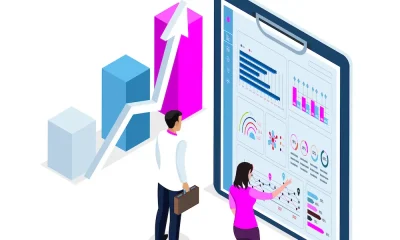Marketing
Creating Pop-Ups For Your Shopify Store

Popups on sites are attention-grabbing. Shopify popups can improve customer engagement and conversion, and who doesn’t want more of both? However, not all popups are welcome, so knowing how and when to use them is vital. If you’re not convinced your Shopify store can get better metrics from popups, this business blog article is for you.
Popups
Popups are windows that open in the user’s navigation. They display an advertisement or information about the business or site relevant to the visitor. The primary motivation of popup ads sites is to generate more online sales. For example, when you visit a site and after a few seconds, a popup presents a discount on the first purchase.
Popups can annoy site visitors, so knowing the best practices for using them is vital. Popups for Shopify should improve user experience (UX) and create a rewarding buyer journey.
However, even the most competent digital marketer can fail with popups. For example, presenting an irrelevant message to a visitor at the wrong time. Have you experienced the popup that wants your personal information when you’ve just landed on the site? It’s so off-putting that it can cause a high bounce rate.
Popups are time-sensitive, so businesses design several of them throughout the website, leading visitors through their buyer’s journey according to their searches, location, time, and other factors.
Types of Popups
There are many marketing strategies for popups, including:
- Data capture for marketing segmentation
- Scroll-triggered CTA
- Time-sensitive
- Engagement-triggered
- Multi-step popups
- Exit-triggered
Control popups with segmentation
Regarding popups, segmentation refers to the people who will first encounter them during the research phase of a purchase. For instance, you might categorize customers based on whether they are first-time visitors, repeat customers, or the result of a specific social media campaign.
Visitors to specific pages, visitors who engage with your brand, visitors who have recurring purchases in a line of your business, visitors who speak a particular language, and so on are all examples of more specific visitor segments, depending on the nature of your niche.
Create scroll-triggered popups
Online store popups of this type appear once the user has scrolled down to a specific point. The fact that they are still on the page indicates their interest. This is why it’s essential to pique their curiosity with information that builds on their desire.
For example, use the popup to reward repeat visitors to your site, such as readers of a particular blog article, making the offer seem more unique to those individuals.
Create delayed popups
These popups appear only after a visitor has spent significant time on your website. They are helpful for users who are engaged enough to stay on the site for several minutes, and they motivate repeat visitors to take action rather than simply browse and leave the site. This popup helps promote additional content or provide access to a subscription after a user has finished reading a blog post.
Create exit intent popups.
As the name suggests, you can use this type of prompt when a visitor is about to leave your website. Before a visitor leaves the cart page, a popup might encourage the consumer to complete the transaction. If done right, this can help you significantly lower your cart abandonment rate, which is why it is one of Shopify’s most common purposes of exit intent popups.
To prevent the loss of the work a customer has already done in picking particular products, this type of call to action can be used before the customer abandons their shopping cart and leaves the site. When they have them in their email inbox, it will be much easier for them to finish the purchase.
Create popups based on interaction.
Triggering a popup based on a customer’s interaction with a button or link can be helpful if you tailor your message to them at a specific stage in the purchase process. For instance, use a free version before purchase. This can be very helpful if the interaction has occurred on a service page where, for example, the goal is to convince the client to subscribe.
Create multi-step popups
You can use multiple popups to collect more personal data without annoying your visitor. Zero-party or first-party data will help you to qualify leads or divide your audience into marketing segments. For example, data on interests or needs can be used to send targeted emails when you have a deal on a specific product.
The multi-step popup can be risky, so test your campaigns thoroughly, and if you witness a higher-than-usual bounce rate during the series, remove some of the popups in the campaign. Remember, your goal with popups is to keep visitors online so they become loyal returning customers.
Conclusion
Learning how to create popups for Shopify will keep visitors on your site longer. Set goals and measure how your popups are performing. Your store can increase engagement and conversion by building customer trust and loyalty.
Use popups to alert visitors to new offers and encourage them to take advantage of discounts and giveaways. As with all marketing and sales initiatives, you must start with a plan. Work out what you want to achieve and what messages will get the desired results with your intended audience. Don’t forget it’s not just words that will improve customer engagement. You will need to invest in visually appealing windows that will compel visitors to take action.






